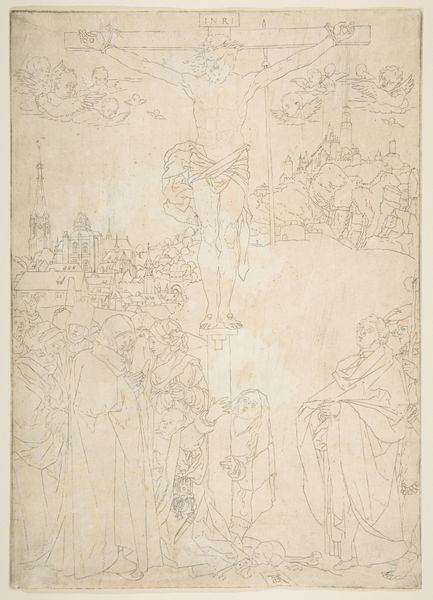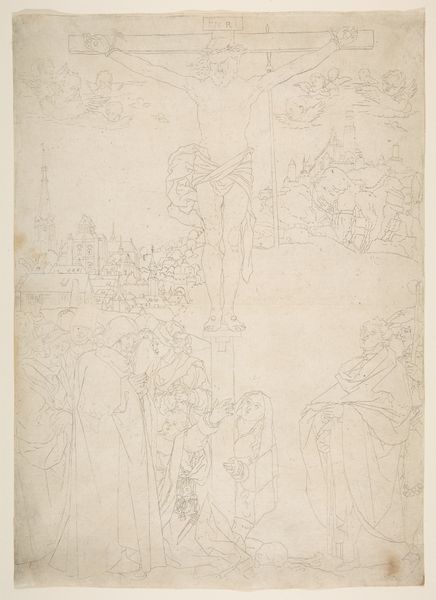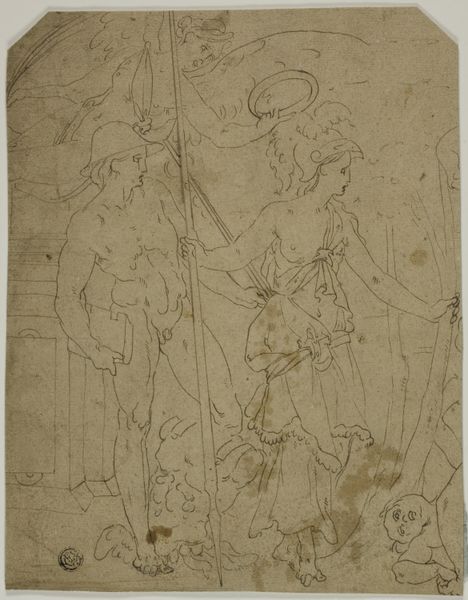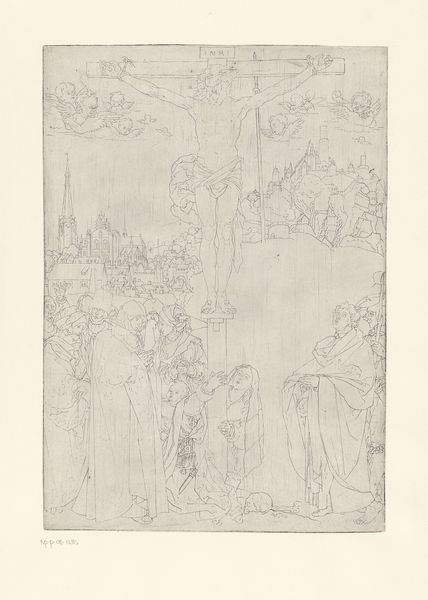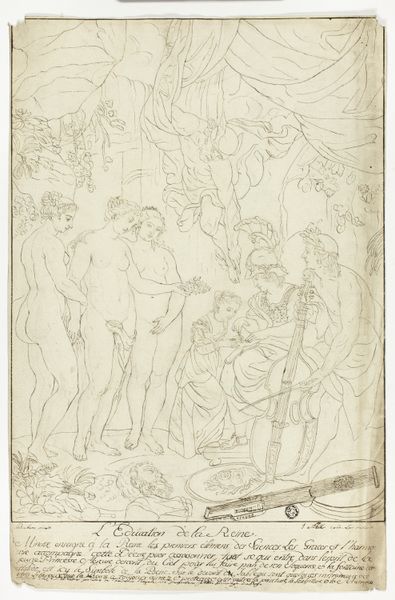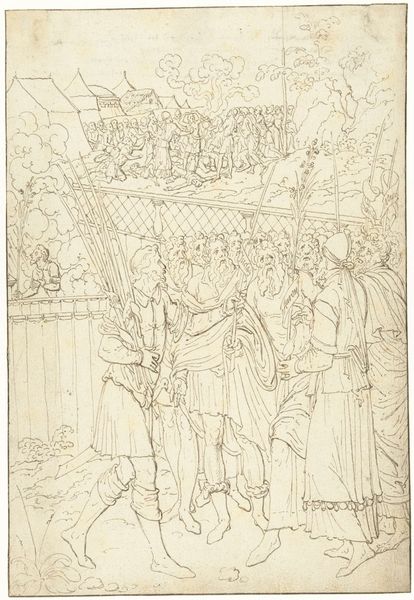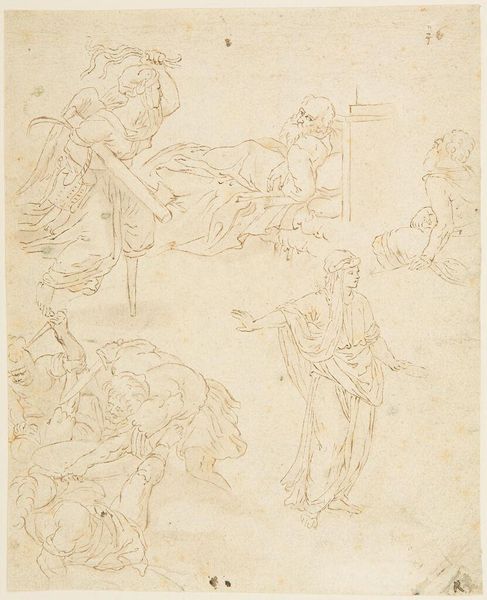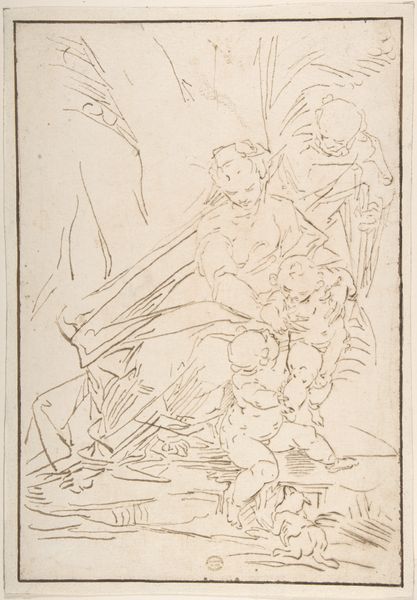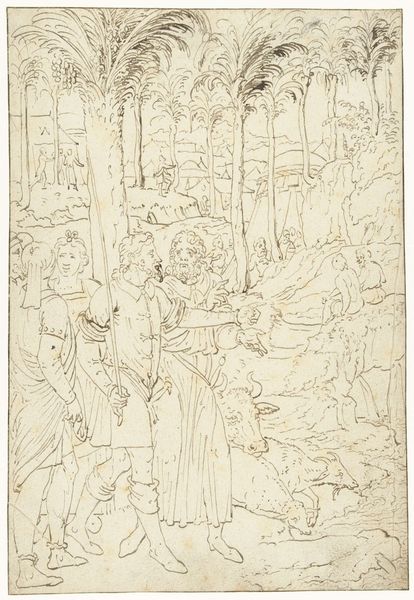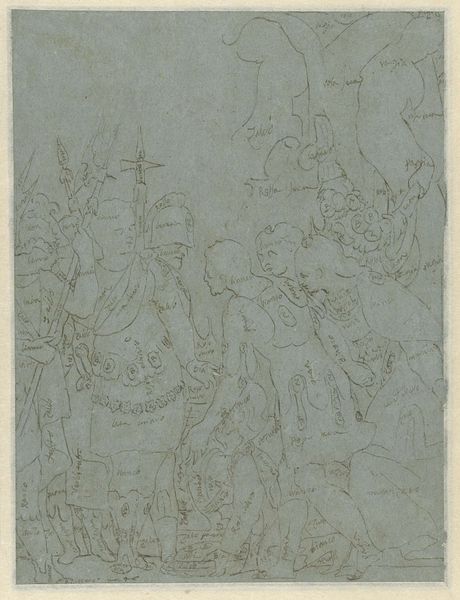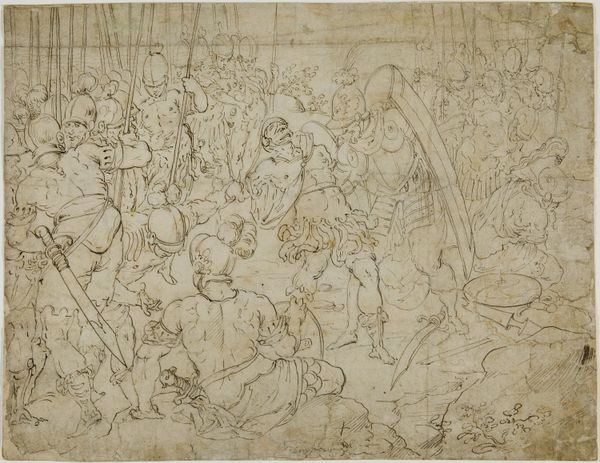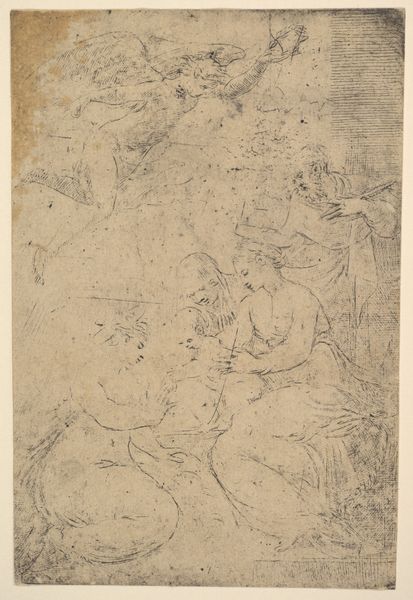
drawing, print, etching, pencil
#
drawing
# print
#
pen sketch
#
etching
#
pencil sketch
#
landscape
#
mannerism
#
figuration
#
pencil
#
history-painting
Dimensions: height 318 mm, width 225 mm
Copyright: Rijks Museum: Open Domain
Editor: This etching, "De kruisiging," or "The Crucifixion," from 1590 to 1610 by an unknown artist, feels remarkably sparse for such a dramatic scene. There's a certain unfinished quality. I'm curious about the city behind the cross; it almost looks peaceful in comparison. How do you interpret this work, particularly within its historical context? Curator: It's a fascinating piece precisely because of its seeming incompleteness. It allows us to consider the power of the Church and the role of religious imagery at that time. How does the etching process, itself, contribute to a wider dissemination of these images, influencing public devotion? Editor: So the printmaking process amplified the religious message for broader consumption, despite its raw execution? Curator: Precisely. Furthermore, observe the almost panoramic view combining urban life with this extremely iconic spiritual moment. Think of the historical battles about whether religious works could include the everyday? Editor: So the city view may be contentious given the spiritual symbolism, right? Also, why are certain figures at the foot of the cross more fleshed out than figures and angels in the back? Curator: Consider it as visual emphasis. Who holds the power here? Is it divine figures and angels? Or ordinary folks that populate earthly communities. The detailed drawing guides our focus to earthly actors and their experience witnessing the event. Consider who would want the focus to be there versus the heavens? Editor: So, it's almost like a political argument embedded in the artwork's choices of style and emphasis, meant to question divine power. Thanks, that really changes how I view the entire piece! Curator: Exactly! Seeing the work this way helps one appreciate its cultural and political significance beyond simply illustrating a biblical scene. Editor: Definitely, I'll remember to consider not just "what" is shown, but "how" it is shown and for whom when thinking about a piece in the future!
Comments
No comments
Be the first to comment and join the conversation on the ultimate creative platform.
